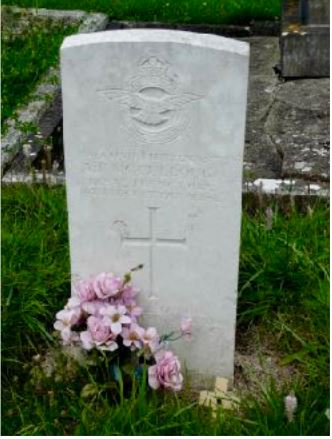62 Squadron, Royal Flying Corps

Alexander Fenton McCullough is an interesting individual in that he was originally a member of the Canadian Army Service Corps and later was commissioned into the Royal Flying Corps (RFC).
He was born on 24 March 1894, in Ottowa, Ontario to Alexander and Mary M McCullough. His father may have died prior to his entry into the Canadian Army, as when enlisting he gave his mother as next of kin, living at 198 Cobourg Street, Ottowa. He enlisted into the Canadian Army at Toronto, on 14 December 1914. In civilian life he was a Civil Servant and he was unmarried.
He was given the number 166 as a Private in the Canadian Army Service Corps (CASC) and moved to England on 10 April 1915, arriving in France on 9 September 1915. He served as a Driver with the 2nd. Divisional Ammunition Column and was later attached to a machine gun battery. Prior transferring to the Royal Flying Corps (RFC) he held the rank of Lance Corporal.
He joined the RFC on 26 March 1917 at Gosford and joined the SMA (School of Military Aeronautics) there on 13 April 1917, before moving to 24 RS (Reserve Squadron) at Netheravon on 25 May 1917, having been commissioned as a Temporary (Probationary) Second Lieutenant on 24 May 1917. On 31 May 1917 he transferred to 8 RS and on 18 June 1917 he was posted to 62 Squadron, Filton. On 15 August 1917 he was appointed Second Lieutenant (Flying Officer).
On 17 July 1917, 62 Squadron transferred to Rendcomb airfield, Gloucestershire and was equipped with the Bristol F2b fighter aircraft. His death was reported in the Gloucester Journal of 18 August 1917, the inquest into it in that newspaper’s 25 August 1917 edition and his funeral in the Cheltenham Chronicle of the same date.
Evidently McCullough had arrived from Bristol a few days before and on Thursday, 16 August 1917 was making his first solo flight in the locality. According to one of the witnesses at the inquest, he had spoken to McCullough before take-off and he was in excellent spirits and full of confidence. The engine was running in good order and on the previous afternoon he had taken the deceased up in the same machine, as a passenger. He took off at about 10am (in a RE8 – Serial No. B741) and was in the air for about two minutes when witnesses said that the aircraft started to glide from about 250 feet, in a north easterly direction before making a flat left hand turn against the wind. It then made about five spins before crashing into the ground. In the opinion of another witness, the accident was due to certain controls being kept open instead of shut and the deceased made the mistake of trying to close them and in doing so shut off the engine. A Lieutenant in the Royal Army Medical Corps stated that the McCullough died instantly from a dislocated (broken) neck and had also sustained a broken leg and facial cuts. He was aged 23.
He was afforded a full military funeral in the Chesterton Cemetery at Cirencester. A large number of fellow RFC Officers were present plus 50-60 NCOs. His sister, who was a nurse at Canadian Red Cross Special Hospital, Buxton also attended, along with 200-300 civilians. Interestingly the Cheltenham Chronicle report notes that the coffin was enclosed in a lead shell in order that it may be exhumed after the war and taken to Canada for re-interment in Ottowa. It would appear that this never happened.
His grave is marked by a CWGC headstone, which bears the emblem of the RFC and there is no mention of his Canadian origin.
Researched by Graham Adams 28 September 2014 (revised August 2024)
